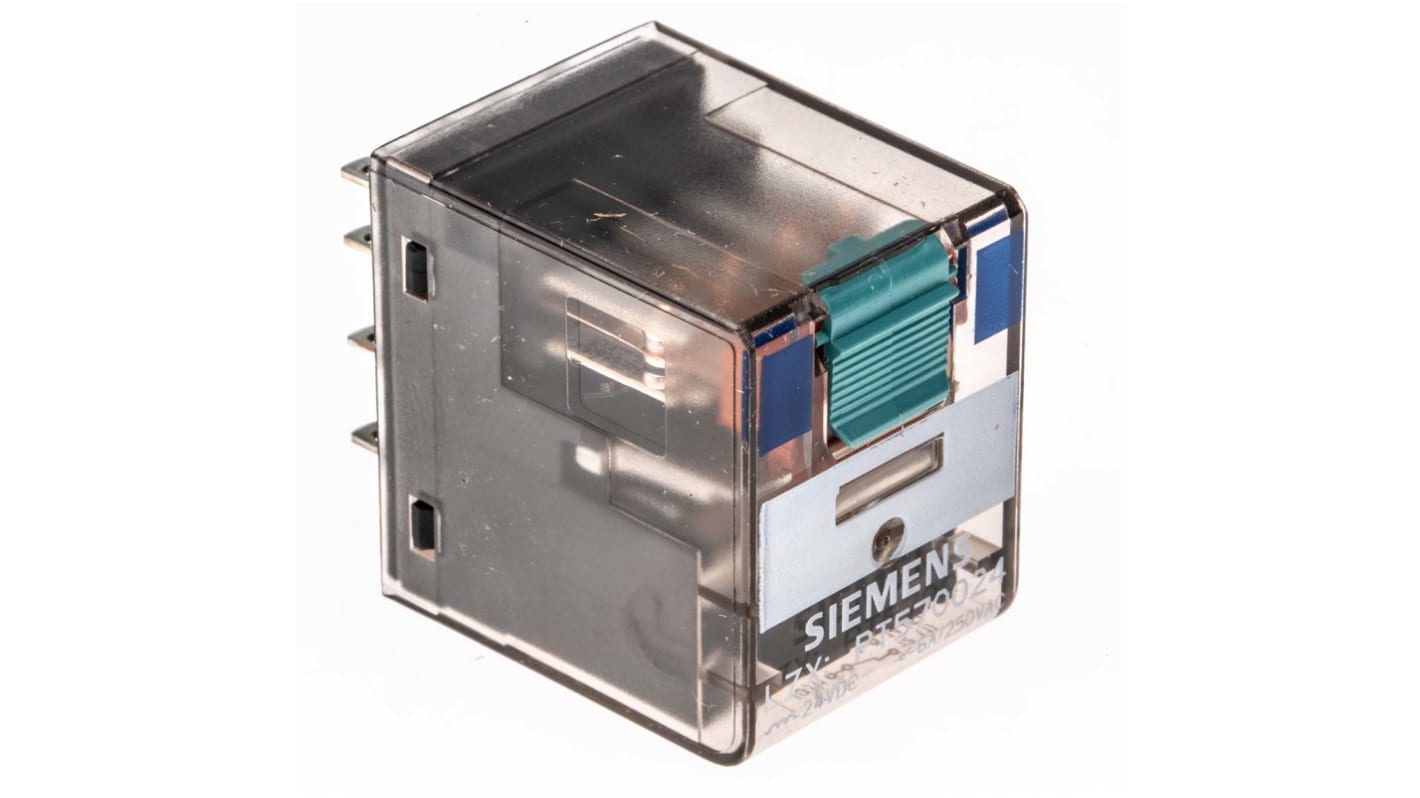Siemens Plug In Power Relay, 24V dc Coil, 6A Switching Current, 4PDT
- RS Stock No.:
- 758-6891
- Distrelec Article No.:
- 304-02-214
- Mfr. Part No.:
- LZX:PT570024
- Brand:
- Siemens

Subtotal (1 unit)*
£7.74
(exc. VAT)
£9.29
(inc. VAT)
FREE delivery for orders over £50.00
In Stock
- 167 unit(s) ready to ship
- Plus 45 unit(s) ready to ship from another location
Need more? Click ‘Check delivery dates’ to find extra stock and lead times.
Units | Per unit |
|---|---|
| 1 + | £7.74 |
*price indicative
- RS Stock No.:
- 758-6891
- Distrelec Article No.:
- 304-02-214
- Mfr. Part No.:
- LZX:PT570024
- Brand:
- Siemens
Specifications
Technical Reference
Legislation and Compliance
Product Details
Find similar products by selecting one or more attributes.
Select all | Attribute | Value |
|---|---|---|
| Brand | Siemens | |
| Coil Voltage | 24V dc | |
| Contact Configuration | 4PDT | |
| Mounting Type | Plug In | |
| Switching Current | 6A | |
| Number of Poles | 4 | |
| Latching | No | |
| Series | LZX | |
| Terminal Type | Screw | |
| Maximum Switching Voltage AC | 230V | |
| Maximum Switching Voltage DC | 24V dc | |
| Length | 22.5mm | |
| Height | 28mm | |
| Depth | 28mm | |
| Application | Power | |
| Select all | ||
|---|---|---|
Brand Siemens | ||
Coil Voltage 24V dc | ||
Contact Configuration 4PDT | ||
Mounting Type Plug In | ||
Switching Current 6A | ||
Number of Poles 4 | ||
Latching No | ||
Series LZX | ||
Terminal Type Screw | ||
Maximum Switching Voltage AC 230V | ||
Maximum Switching Voltage DC 24V dc | ||
Length 22.5mm | ||
Height 28mm | ||
Depth 28mm | ||
Application Power | ||
- COO (Country of Origin):
- AT
Siemens Non-Latching Power Relay, 24V DC Coil Voltage, 6A Switching Current - LZX Series - LZX:PT570024
Use this power relay from Siemens to open or close the electrical circuit of a PCB. When current flows through the relay, it activates an internal electromagnetic coil. This coil moves the contact to open the circuits allowing current to move through. It's a non-latching relay, which means it automatically goes back to its resting position once the flow stops, minimising energy consumption. Thanks to the plug-in mounting method, you can easily install it onto the PCB. You'll commonly find components like this one used in industrial applications such as push buttons, audio amplification systems and automotive electronics.
• Screw-type terminal for a stable electrical connection
• Compact dimensions of 22.5 (L) x 28 (D) x 28mm (H) to save space in complex setups
• Switching current of 6A for energy-efficient operation
• Compact dimensions of 22.5 (L) x 28 (D) x 28mm (H) to save space in complex setups
• Switching current of 6A for energy-efficient operation
What's the difference between a latching relay and a non-latching relay?
A latching relay will remain in its last contact position even without a consistent current flow, while a non-latching relay can only maintain its contact position if it's receiving current.
Related links
- Siemens Plug In Power Relay 6A Switching Current, 4PDT
- TE Connectivity Plug In Power Relay 6A Switching Current, 4PDT
- Phoenix Contact PCB Mount Power Relay 6A Switching Current, 4PDT
- RS PRO Plug In Power Relay 6A Switching Current, 4PDT
- Turck Plug In Power Relay 6A Switching Current, 4PDT
- Hongfa Europe GMBH Chassis Mount Power Relay 6A Switching Current, 4PDT
- Omron Plug In Power Relay 6A Switching Current, 4PDT
- TE Connectivity DIN Rail Power Relay 6A Switching Current, 4PDT
